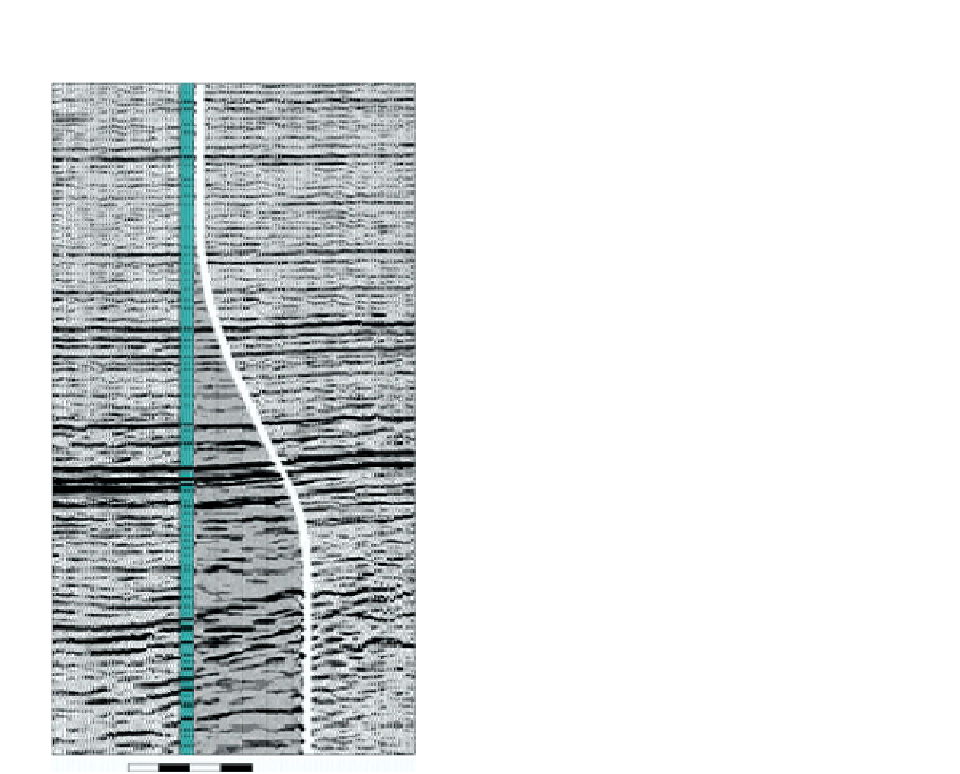Geology Reference
In-Depth Information
NW
SE
If this comparison is documented in the VSP
processing report, it is important to check that the
seismic that was used is still the current version; if
not, new displays need to be created.
If a VSP processing report compares the VSP with
a well synthetic, the wavelet used to create the
synthetic needs to be checked. It is likely to have
been a simple idealised wavelet.
Routine digital manipulation of VSPs by the
interpreter is less easy than creation of synthetics
from log data, because more specialised software is
needed.
Greater integration of VSPs into standard
interpretation workflows would be beneficial,
including VSP inversion to impedance.
2.0
2.0
4.4 Well tie approaches
using synthetics
When tying wells to seismic it is quite indefensible
simply to use a time
depth relation from checkshots,
post the well tops on the seismic and start picking.
Whilst the timing of the seismic and the checkshots is
likely to be close they are probably not the same and
making assumptions about wavelet phase, as will be
shown below, is prone to error. The well tie is a basic
tool to analyse the connection of geology and seismic
and two approaches will be discussed that can be imple-
mented with most seismic interpretation software. The
first, referred to as the
-
1000m
,
requires good control on depth and time and seeks to
extract a wavelet from the seismic without making any
assumptions about phase and timing. In the absence of
good time
'
well matching technique
'
Figure 4.8
A walk-above VSP image from a deviated well inserted
into surface seismic data. VSP data is the greyed zone between the
blue and white lines. Also shown in blue is a corridor stack for a
vertical borehole drilled from the same surface location (after
Kaderali
depth control the second approach, referred
to here as the
-
et al.
,
2007
).
'
adaptive technique
'
, involves more trial
and error.
The volume of rock sampled is different.
4.4.1 Well tie matching technique
In order to estimate the correct wavelet for the purposes
of picking seismic or designing zero phasing or inver-
sion operators, a pragmatic approach is to estimate the
wavelet directly from the seismic data. The technique
described here is that of White (
1980
) and White and
Simm (
2003
). The wavelet is extracted from the data
through a least squares technique (
Fig. 4.9
), treating the
well tie as a noisy input
Difference in frequency content (the VSP will
generally be higher frequency and will need to be
filtered back to match the seismic bandwidth).
Differences in wave propagation effects, e.g.
anisotropy and attenuation, due to differences in
raypath.
Migration effects.
There are some practical issues that affect the way that
the seismic interpreter makes use of VSPs.
noisy output problem. It is
essentially a stochastic approach which treats the well
tie as a noisy input
-
In general the key step is to compare the corridor
stack with the surface seismic.
-
43
ties
are
the most

